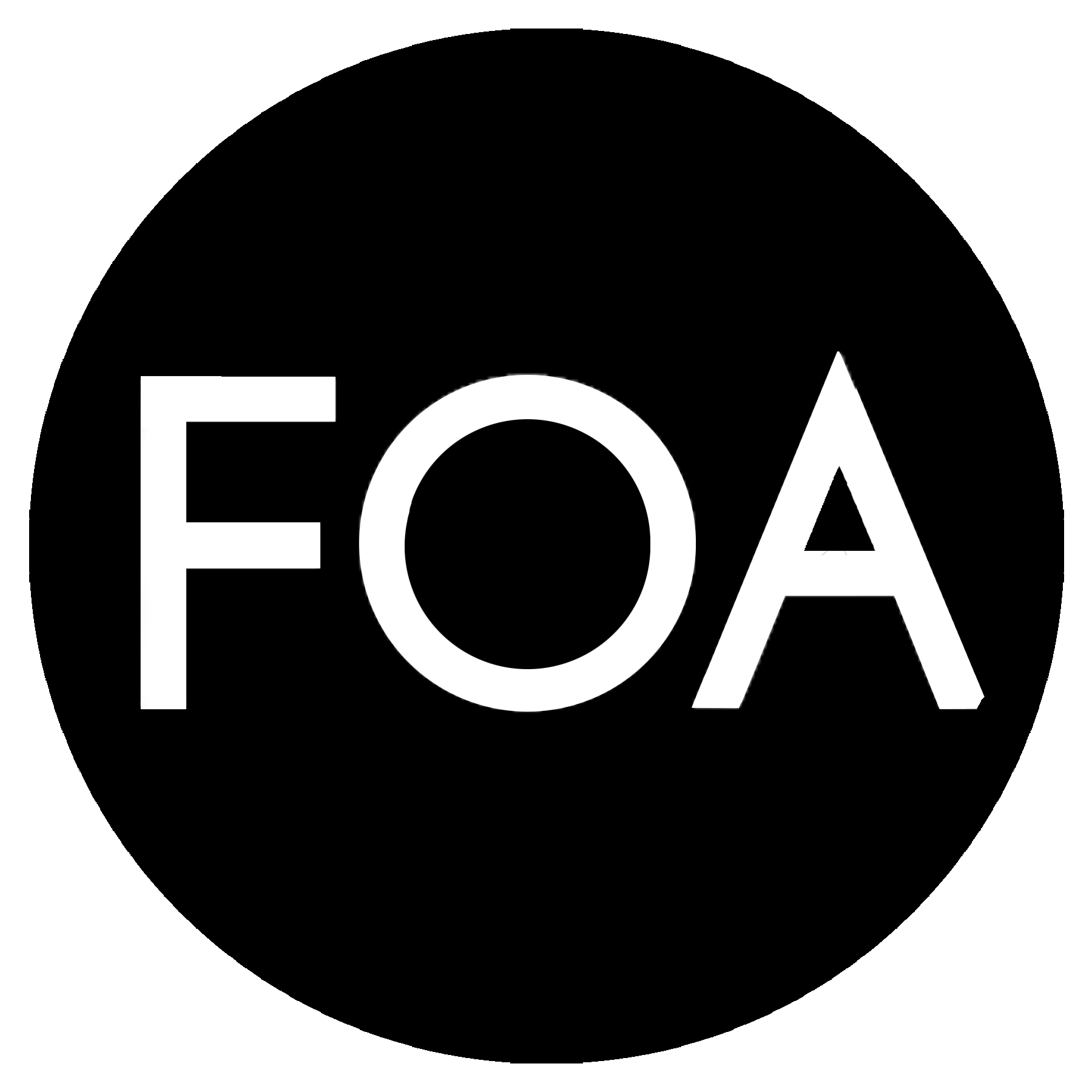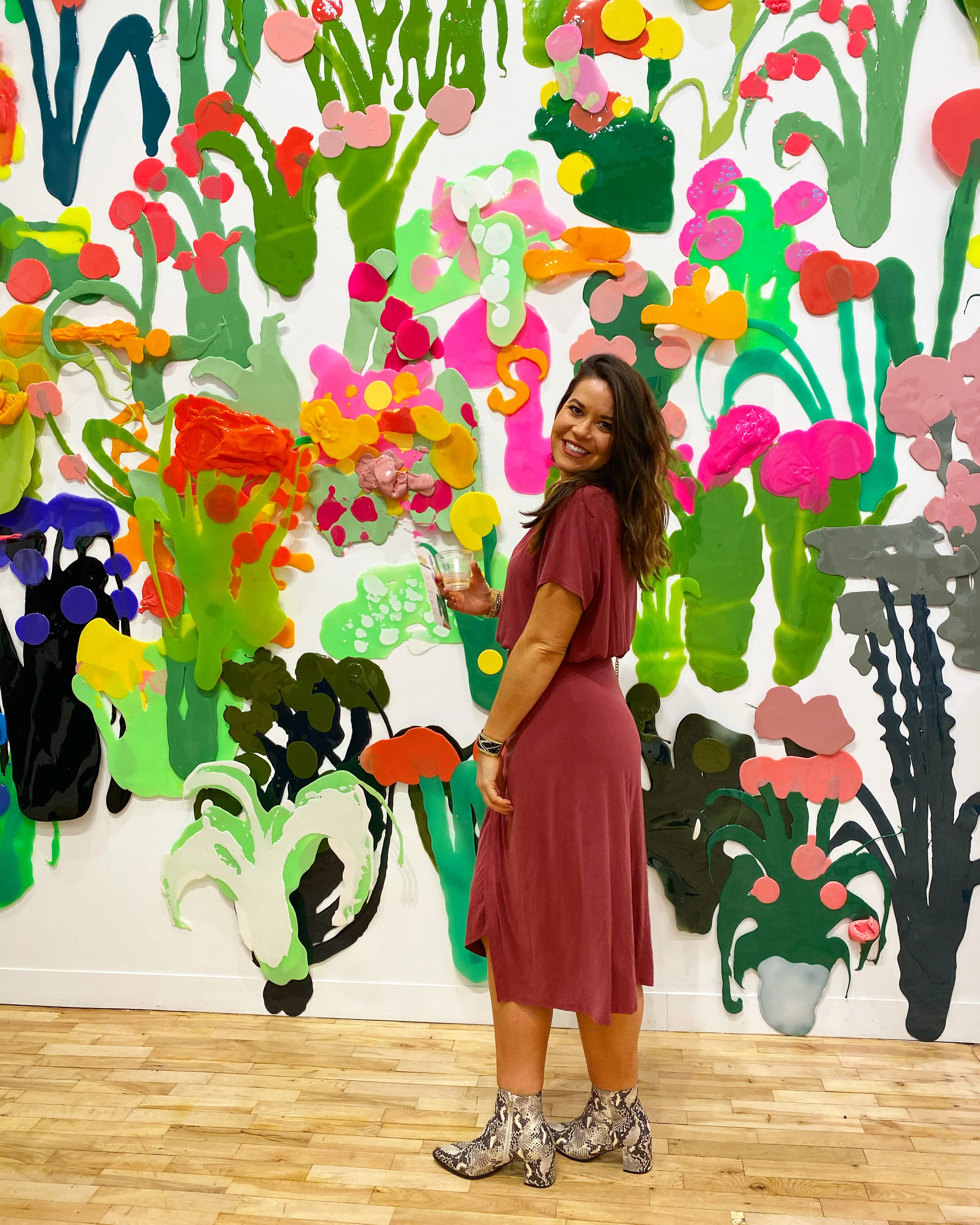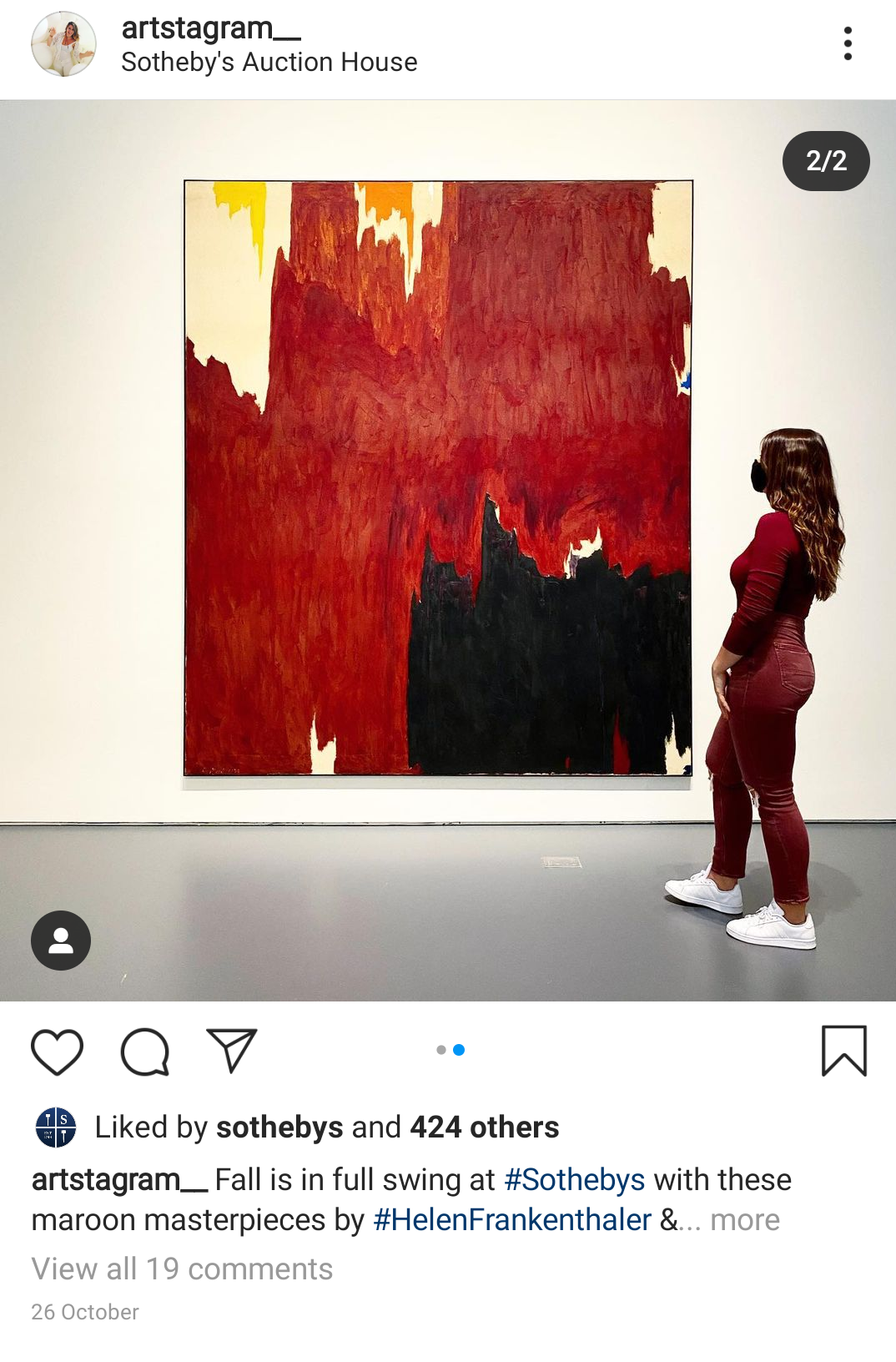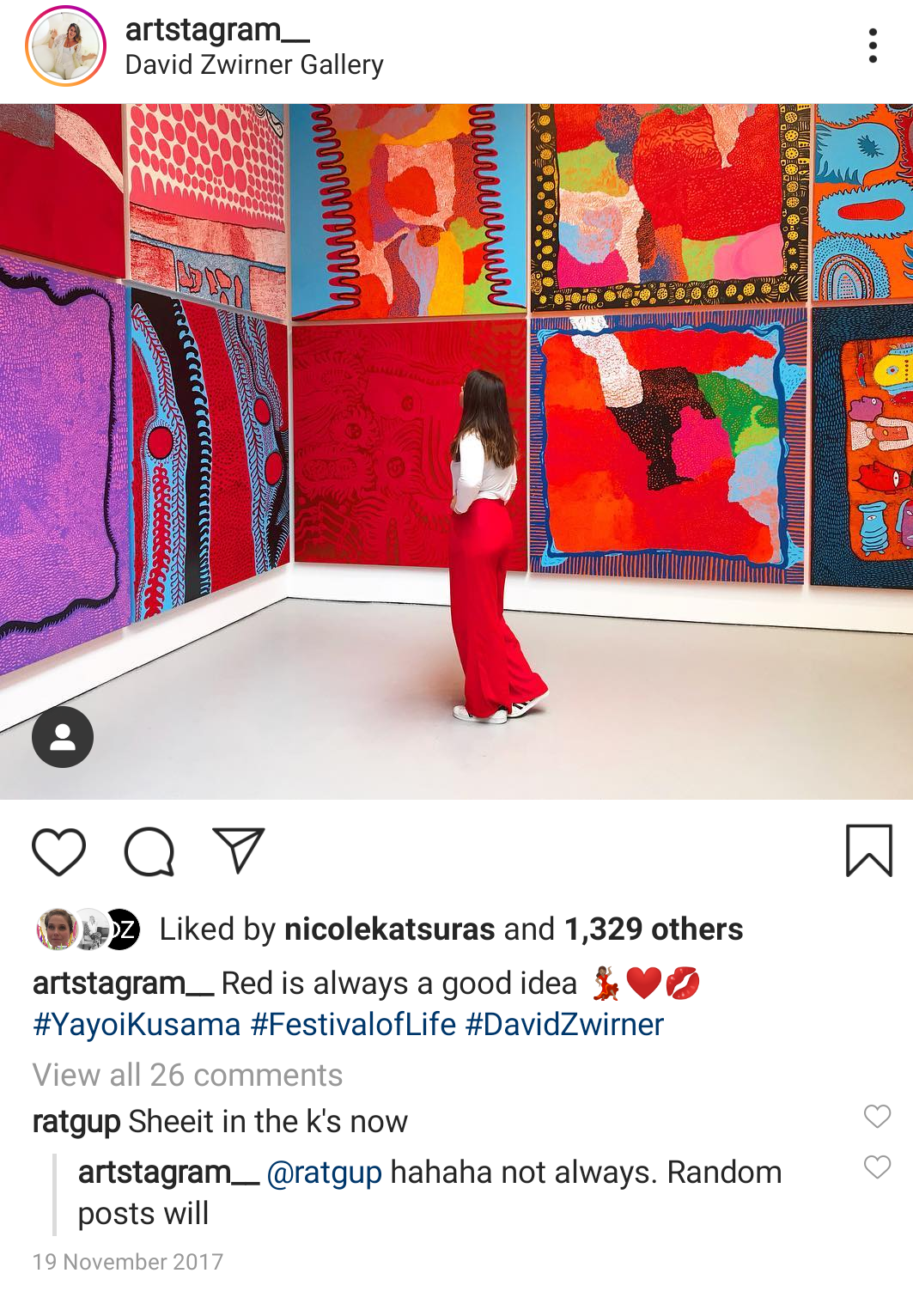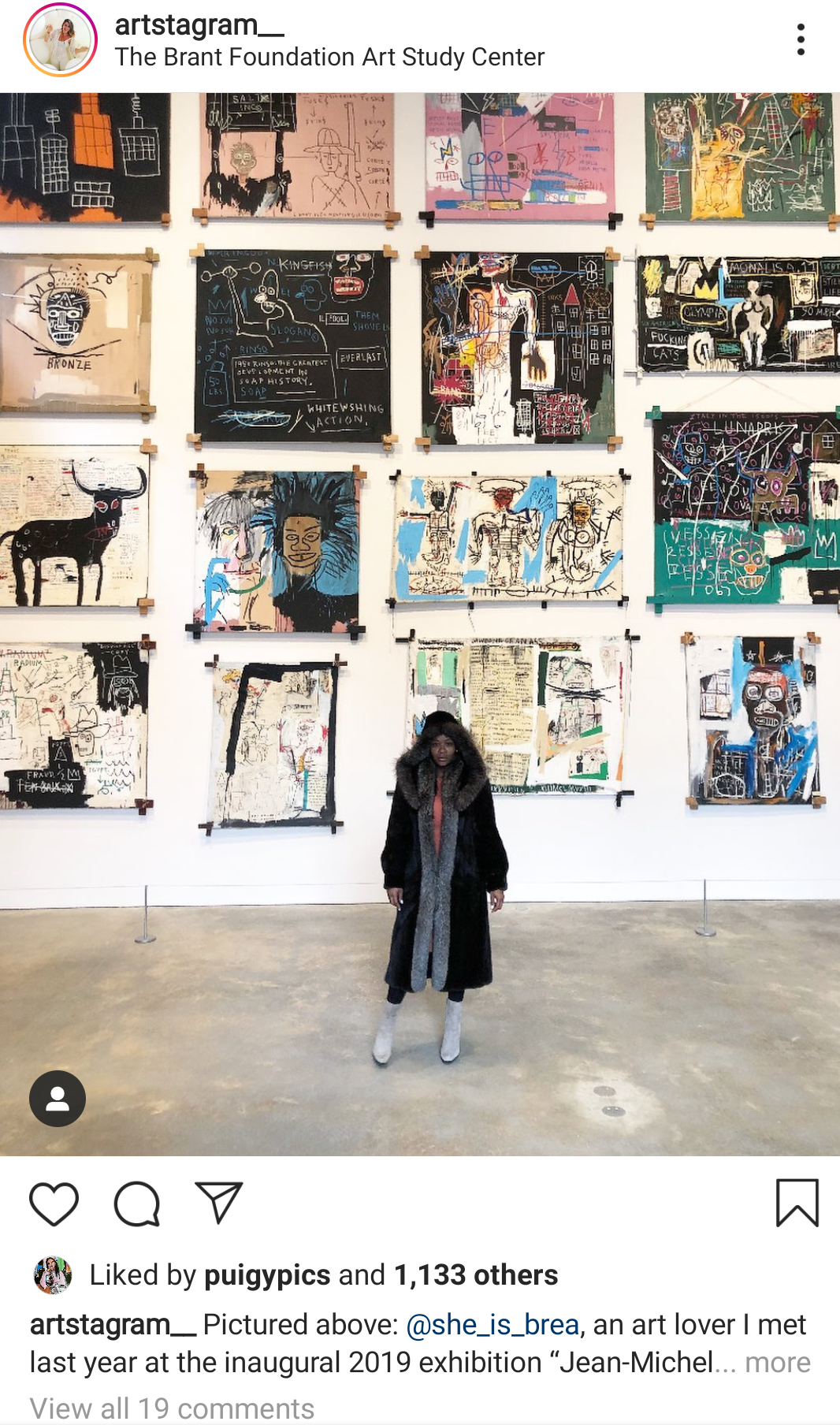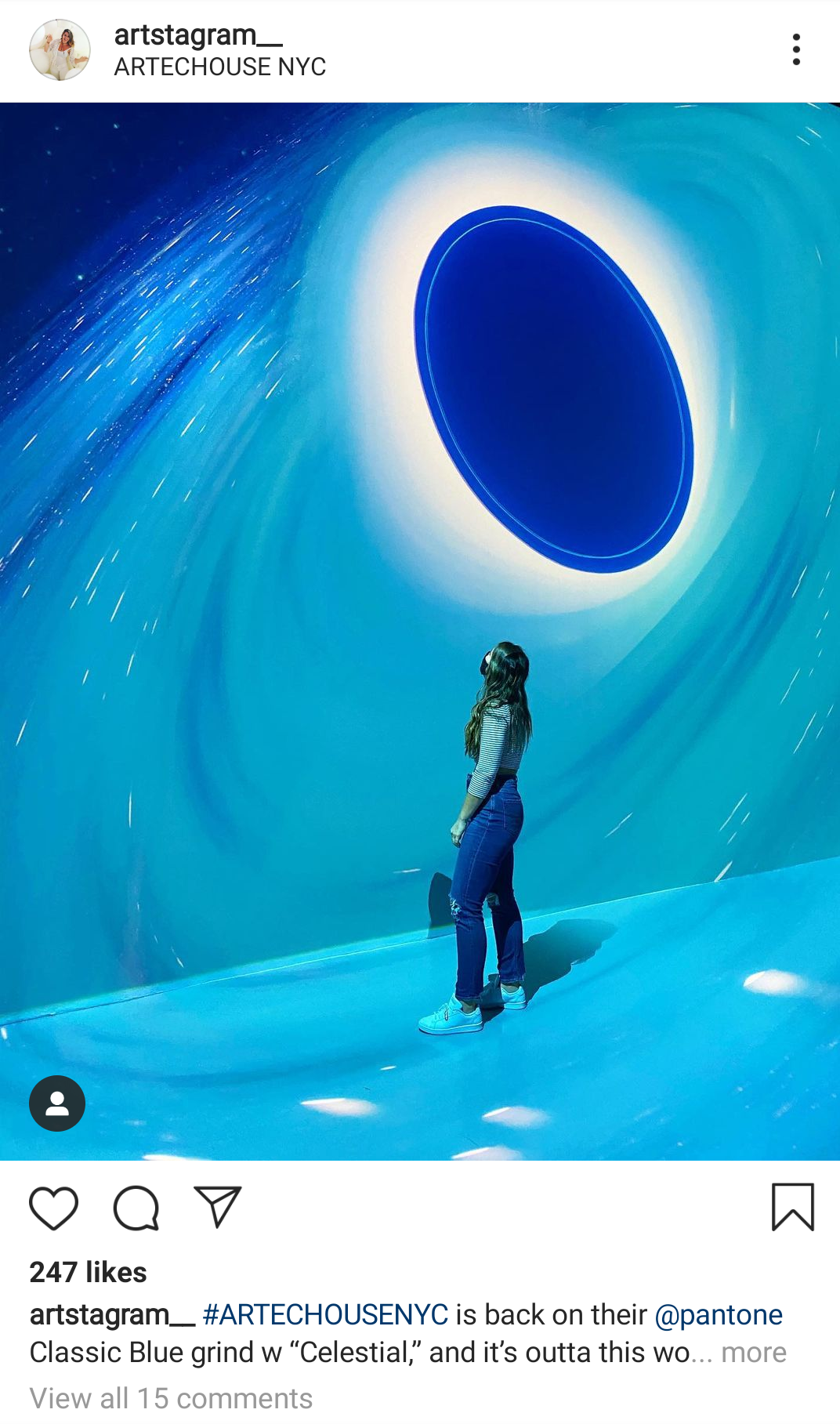Nina Blumberg and the Ever-Changing Art World
Nina Blumberg
is an experienced art advisor living and working in New York and has been running the popular @artstagram__ Instagram account since 2015. Nina’s education led her to pursue a role that sits between the historical and contemporary art worlds and has propelled her to the forefront of collaborative advising. Nina spoke to Alison Poon about her many complementary roles both online and in person, the pros and cons of social media in an ever-changing art world.
INTERVIEW WITH NINA BLUMBERG
Alison: Your background is in Art History and Art Marketing. How did you find the transition from a more historically focused education to the contemporary New York art scene?
Nina: After double majoring in Art History and Spanish for undergrad at the University of Virginia, I moved to New York for a two-year program at the Fashion Institute of Technology, called ‘Art Market Principles and Practices’. While at FIT, I interned for my current boss, Erica Samuels, at her art consulting firm (then Art & Advisory, now Samuels Creative). I’ve been with Erica at Samuels Creative ever since!
Being at an art advising firm is the best bridge between art history and contemporary art that I could have imagined when first starting out. You have to keep the entire history of art - artists’ influences, past artistic movements, etc - in mind while simultaneously looking forward to what’s current and upcoming in the market in order to advise a client properly on what they should acquire. From watching my boss, I’ve learned that it’s a delicate balance between respecting those artists who came before and paved the way for future generations, while still being brave enough to champion younger artists that are doing noteworthy things with their contemporary practice -- it’s never a guarantee that they’ll become the next big thing, but I guess that’s part of the fun of collecting…!
“Being at an art advising firm is the best bridge between art history and contemporary art”
Alison: Your full-time job as an art advisor for Samuels Creative & Co. is a role often not discussed in art school from the artist’s side, could you explain a little bit about your job and what it entails?
Nina Blumberg at 81 Leonard Gallery.
Work by Volume 11 artist, Méïr Srebriansky
Nina: I basically always describe the role of an art advisor to anyone not familiar with it as ‘a real estate agent, but for art instead of houses.’ We help our clients buy, sell, transport, frame, insure etc. etc. fine art. It depends on the client as well, and how educated they are themselves and how much or how little they’d like us to be involved throughout the process. It’s definitely flexible.
Alison: You have a strong following on @artstagram__, an Instagram art page. How did this idea come about and what opportunities have arisen from it?
Nina: In 2015 after I graduated from my master’s program at FIT and transitioned to working full-time at Samuels Creative, I found that I was seeing a lot of art, by default of school and my job. I was constantly visiting galleries, museums and auction houses in order to scope things out for my boss and to generally just be in the know about what was going on in the New York art world.
I’m such a documenter by nature that I found myself with hundreds of pictures… I thought maybe my friends were tiring of my art posts on my normal Instagram account, so decided to start a separate art one. After a year or two of consistent posting and engaging with the newly forming contemporary art Instagram world, I began noticing a big increase in followers and it just snowballed from there! I have just over 22k now. I think I’m lucky that an art Instagram account was a lot less common then. It was at the beginning of the influencer industry in fashion, food etc. still so I think I caught it at a good moment in time. It’s a bit over-saturated now.
Opportunity-wise I’ve collaborated with some great art companies, galleries, museums etc. Even some brands, like watches, wine, jewelry! Hahah - I try to keep it as art-related as possible though. Before the pandemic, I was attending a lot of museum and gallery openings and media previews. I’ve met a lot of great people in the art world because of @artstagram__ too!
Alison: From your @artstagram__ account, I can see that you frequently visit galleries and exhibitions both for your work and outside of it. How important is seeing a variety of work in different situations to you?
Nina: I think it’s super important! A studio visit with an artist, for example, is a way more intimate look into the artist’s creative process and an artwork’s inception, apart from the finished product that you see in a gallery or a museum. Seeing art in a gallery as a commercial product with the ultimate goal of being sold is very different from seeing it in a museum where the mission is to educate the public on the larger art historical context.
Alison: In an increasingly digital world – especially with the current pandemic - social media has been turned to as a way of gaining exposure, alternative to gallery representation and even an alternative to galleries themselves. How do you find these modern digital adaptations versus traditional forms of artist representation?
Nina: It’s awesome that social media is democratizing in the sense that it gives every person an equal opportunity to make something out of his or herself as a ‘brand,’ whether by starting a personal blog or to market a business or whatever it may be. Selling art online, and specifically via Instagram, was becoming increasingly popular prior to the pandemic and then obviously turned into more of a necessity than just an option for a while we were all in quarantine and some continue to be.
However, I’m traditionalist in the sense that, for me, nothing replaces seeing a work of art in person. All the pictures and videos in the world can’t capture the feeling and sense of space you have being in front of the object yourself. I think people can be lazy (myself included) and they want the path of least resistance for most things, which social media provides easily. And I do feel it can be a bit frustrating, as someone who went to school and studied Fine Art for 6+ years, that anyone can just *say* they’re an art advisor or an expert in this or that now and people may believe them- they can grow a following just as easily as the next person. There has to be some level of legitimacy demanded of people in any industry that they have a trustworthy, educated and discerning voice on the matter. Social media is both a blessing and a curse in many ways!
Alison: Alongside Samuels Creative & Co. and @artstagram__ you also contribute to @cultbytes_ Instagram. How do you find these multiple roles interact and complement each other?
Nina: I’m lucky that all of my various full-time and part-time jobs and projects intertwine - it’s convenient and definitely contributes to my productivity on both sides. They all feed into one another nicely. The more art I see for content for @artstagram__ and @cultbytes, the more educated I am about the contemporary art market, which is helpful in art advising our clients at Samuels Creative & Co. and vice versa. I will say that we deal with some amazing blue-chip art at Samuels Creative & Co., artists that have established markets and a higher price point, which is very exciting for a nerdy art history major like myself. My side hustles more regularly deal with younger, emerging art and artists. It’s cool to get the combined bigger picture and come at it from different perspectives - there’s rarely a dull moment!
